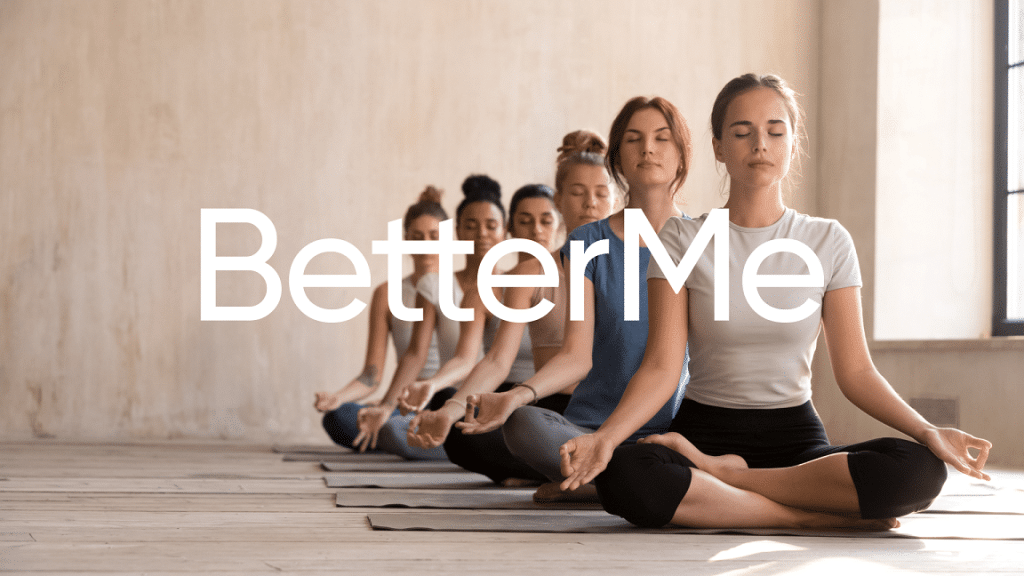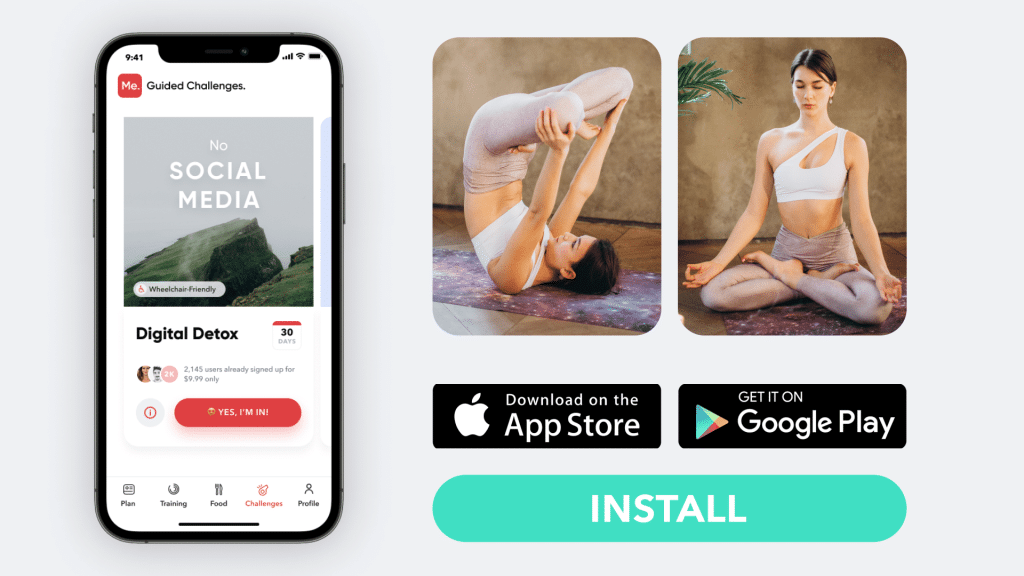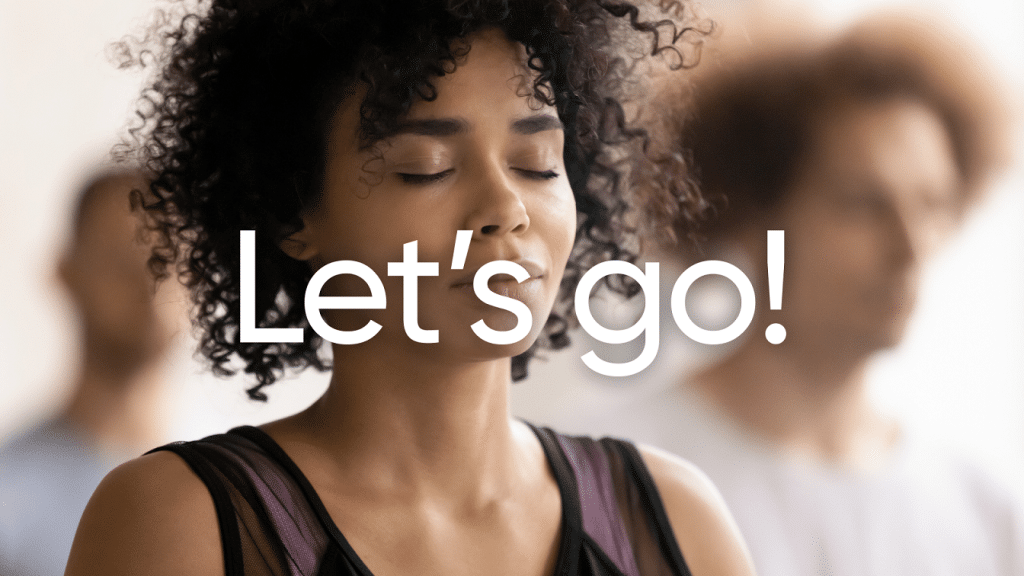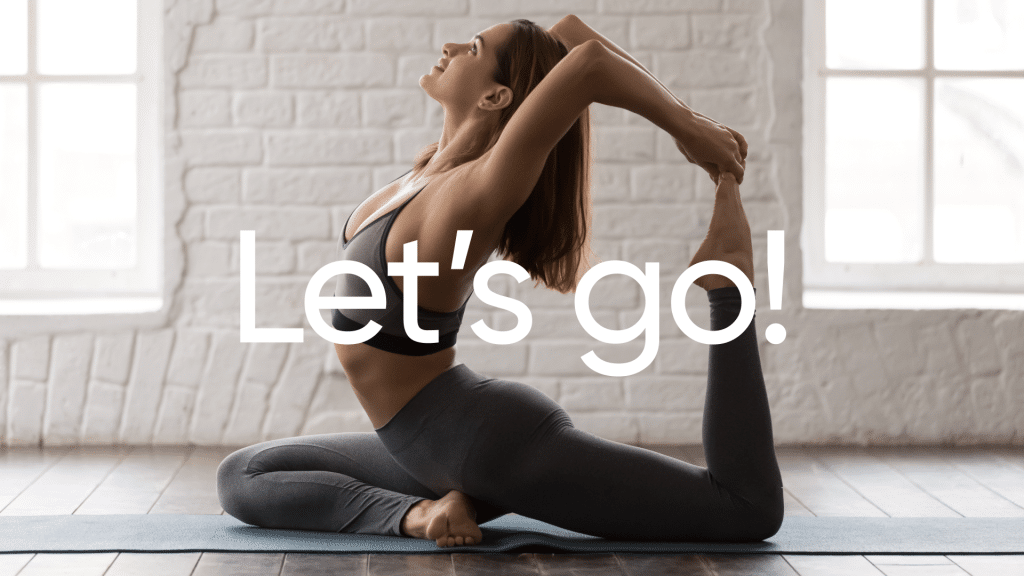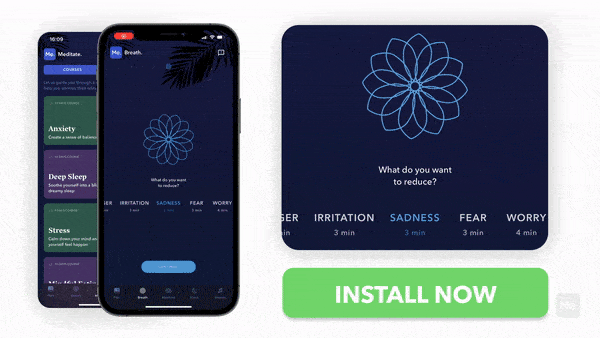More people across the world are embracing meditation, with a majority assuming that experts in this field utilize the same approach in helping meditators achieve their goals. According to MayoClinic, guided meditation is one of the numerous meditation techniques. Others include Mindfulness, Mantra, Tai Chi, Qi gong, Yoga, and Transcendental meditations (8). A teacher teaches this practice, while a facilitator guides meditation. Therefore, it is essential for therapists, coaches, and thought leaders among others in the personal development sector to comprehend how to lead a guided meditation session.
How to perform meditation depends on the approach used by the trained expert who’s helping the participants practice. The best-guided meditation leads the audience through an inner experience to a particular goal or objective, such as a guided meditation for relaxation of the mind and body, and in complex situations, a journey such as guided imagery and thought-provoking questions (5).
Here is everything you need to know about guiding meditation.
What Is A Guided Meditation?
Meditation is not done in one way. For instance, it is one thing to teach and another to guide meditation (5). Teaching meditation involves imparting the relevant knowledge by explaining the origin, history, religious beliefs, and the way of life of people associated with mindfulness and meditation and demonstrating appropriate posture and breathing during the practice, i.e., how to meditate.
Guiding meditation, on the other hand, is facilitating the practice for the participants. It is also known as guided imagery or visualization. This way of meditating is more of an engaging session where the audience (meditator or participant) follows the facilitator’s guidance or instructions in person or through audio, video, or audiovisual media recording and meditates in response to the facilitator’s words.
Read More: What Is Meditation: Benefits and Techniques
Understanding How To Lead A Guided Meditation
There are numerous guided meditation scripts to help you master and properly take participants through meditation. You need formal training to give a true guided meditation with a particular outcome or goal.
How To Lead A Great Guided Meditation?
Targeted guided meditations are more insight provoking than simple mindful meditations.
Here is a simple meditation guide you can follow to help your audience attain their meditation goals (5):
-
Plan And Rehearse
Prepare well for the session beforehand, even if you are well-experienced in guiding meditation. Doing so will help you sort any kinks and align your goal for the experience with the audience’s needs. You can have a script of everything to be done during the session; for instance, if it is a 20-minute guided meditation, know what will come first and how long each item will take. There are various scripts to help you, such as those on breathing awareness relaxation, counting meditation, cue words relaxation, spiritual meditation, and how to lead a guided walking meditation (4). Rehearse everything before the actual session to build your confidence.
Preparation also involves knowing the room where the guided meditation will occur, like where the lights are. Also, test the speakers to ensure they can connect to your device and ensure they are perfect for a fulfilling meditation experience.
-
Prepare The Room And Ensure Everyone Is Comfortable
Each participant should be comfortable, properly set, and free from any interference during the session. Consider:
- Putting a do not disturb sign on the door to avoid unexpected visitors as the session is ongoing.
- If the audience will be seated or lying down, have the necessary materials for either or both.
- Having eye covers to help participants maintain inward concentration.
- Having all phones switched off or on airplane mode.
- Turning lights off or down.
Meditation is not against movements. Therefore, even after the session begins, ask participants if they are comfortable or need to shift to be more relaxed (1). Effective meditation is determined by how comfortable and relaxed participants are, so individuals do not have to be in an uncomfortable and completely still position. If you see any of the participants shifting in discomfort, find out what they need, and help them adjust to a comfortable position.
Something tells us you often forget to put all the everyday hustle and bustle on hold and simply concentrate on yourself. It’s time to straighten out your priorities! Take a moment to heal, process your emotions, ground yourself, release all the pent-up tension and recharge with the BetterMe: Meditation & Sleep app before getting back into the race of life!
-
Start With An Introductory Talk
Those gathered for the practice always have a purpose, so the guided meditation should support that. Since people are highly stimulated and distracted due to the busyness of life, beginning with a brief discussion helps capture the audience’s concentration and attention and prepares participants for an insightful experience. The audience should be willing to have you guide them into meditation.
You can briefly discuss a quote or a relatable story that will help grab the participants’ attention and may bridge the gap between their previous engagements and the coming meditation practice. After introducing the quote, discuss it, and then ask the audience questions to shift their brains into the introspective gear needed to produce insights during guided meditation.
It is important to assume a confident posture, such as sitting or standing straight with a tall back when giving the introductory talk (1). Just like anchoring in public speaking, your hands should be comfortably placed, and you may also interlock your fingers with the index ones pointing to touch at the tips when giving examples. The confident posture will minimize nervousness and enhance your focus on the content of your discussion.
-
Set The Mood With Some Soothing Background Music
After discussing the topic and everyone is comfortable, the next step on how to lead a guided meditation to open the heart like a rose is kick-started by playing some relaxing music to set the mood. Select ambient and featureless meditation music to play in the background to give the wandering mind something to concentrate on throughout the practice and help slow racing thoughts (1). The soothing music will also help you not feel awkward in silence when the practice begins and masks noises from outside and inside the room, for example, people coughing or breathing and noisy cars.
Ensure the selected music does not have any lyrics, and it should sit well in the background to maintain a sonic environment.
-
Begin With A Progressive Relaxation
Since the start of the guided meditation is the key in shifting participants into a meditative state, do the following:
Lead Participants Through Some Slow, Focused Breathing
It is essential to set the right breathing pace for the audience to attain the desired meditative state. Take them through the correct inhalation and exhalation rhythm. Do not rush them through this crucial step. So silently count to yourself 4 seconds on inhalation, 2 seconds at the top of the breath, followed by 4 seconds in exhalation, then 2 seconds at the bottom of the breath.
Assist Participants In Releasing Tension
From the head down the body, guide the audience to release tension at the different holding areas. If new at facilitating, you do not have to guide them below the hips, just have them relax around the eyes, release jaws, and drop shoulders.
Read More: How To Relax? Meditation Techniques To Release Tension In Body And Mind
-
Take Time And Breath Properly
Resist rushing because this is a crucial part of the practice. Take a minimum of 6 to 10 minutes here, breathing through the nose. Adrenaline may quicken your heart rate and prejudice your perception of the amount of time that is actually passing between your words. Leave as much silence as possible by breathing through your nose to slow your heart rate, making your breath an internal timer by frequently leaving silences a full cycle of breath-in length with as many breathing cycles as you can bear silently.
Attune your breathing to that of the participants by pacing your phrases and words to speak on their out-breath. The internal dialogue that participants engage when you are not guiding them contributes to a great meditation experience. Let the participants take time to breathe and engage in the meditation as you guide them and be in rhythm with the audience’s cycles of breath.
-
Engage The Visualization
Now that the audience’s body and mind are relaxed, the participants are well-prepared to use their imagination. Therefore, you have to become an imaginative tour guide and direct them towards a specific meditation goal. Here, the guided meditation focuses on helping the participants explore their feelings and thoughts or trigger them to use this fertile state of mind in contemplation and self-reflection. You can use one or more of the following to help create an insightful experience:
Guided Imagery
It would be best if you were well trained, experienced, and confident to use this strategy correctly. Begin small by comprehensively describing a place that you have been in nature. Incorporate the senses, as if telling a story to children, and guide the audience to a place in the imagery where they stop moving in their imagination and relax to transition to the next step.
Thought-Provoking Questions
These simple questions are capable of facilitating guided meditation experiences that are deeply meaningful. You may tie your carefully selected and audience-aligned questions to the discussion or quote in step 1. They should be phrased in the first person, for instance, “What am I outgrowing?” Combining guided imagery and the right thought-provoking questions is the perfect recipe for a transformative guided meditation experience.
-
Silent Reflection
Do not talk too much. Remember that the most valuable part of this type of practice is when you are silent; thus, it is important to give the participants time for inner listening. After guided imagery and/or thought-provoking questions, inform the participants that what follows next is a moment of silence. Give them enough time to listen from within, provoke them to reflect silently by asking them to listen for any bits of direction or guidance that they may receive at this time.
-
Gently Reintroduce Your Voice
Slowly bring back the audience to your voice after giving them enough period for self-reflection. You may gently ask them to come back to the sound of your voice, then make them wiggle their toes and shift from the inner world to paying attention to their bodies. Ask the audience to carry something from the experience they just had, for instance, recognizing a feeling or realizing something. This way, they will bring something of value from the memorable meditation experience.
-
Bring Participants To Waking Consciousness
Now that the participants have connected with their bodies, ask them to open their eyes. Suggest a conscious action for the audience to acknowledge the experience and solidify any insights in their minds. You may conclude by conducting a writing prompt around the introductory talk or leave it open-ended. They can take a few minutes and write anything they feel like at that moment in their journals or notepads, or they can stay off their phones for about 10 minutes to briefly live in the moment that they just had.
If you wish to reach into the deep crevices of your mind, take yourself out of the mental loop, regain balance, infuse yourself with optimism, and cultivate compassion – BetterMe: Meditation & Sleep app is exactly what you need!
Benefits Of Guided Meditation
Some of the benefits of guided meditation on the participants include:
- According to the Journal of Evidence-based Integrative Medicine, guided imagery enhances mood, fatigue, and the quality of life in people with multiple sclerosis (3).
- It may be an effective intervention for anxiety, depression, and negative attitudes by generating relaxing states through mental procedures (9).
- It minimizes fatigue and exhaustion.
- Enhances brain function, assisting you to concentrate more, develop skills faster, and improve the powers of your memory (2).
To become an expert, you must learn how to lead a guided meditation by reading relevant books, such as those on guided and therapeutic imagery, download guided meditation scripts online, or learn through trial and error experience. Another way to become a facilitator of guided meditation is by undertaking the relevant course in meditation that is focused and designed on teaching you how to lead a guided meditation and not on teaching others how to meditate.
Note:
- It is normal for starters to be nervous when leading guided meditation one on one, but with time, you will get used to it and overcome the nervousness.
- Do not talk too much or feel that you must say something all the time as the leader of the practice.
- Always have the audience in mind as you guide them to meditate. Change or adapt your guided meditation script to suit your participants’ particular requirements and experiences at a given time.
- The practice of meditation does not require an extraordinary voice; therefore, lead the audience with your normal speaking voice. Avoid a “meditation voice,” i.e., talking very softly, hypnotic, or singsong. Use your normal voice tone and intonation, and be audible for every participant to hear you even as your voice gets softer when you are leading.
- For best-guided meditation, give clear instructions, but do not over-explain so that the meditation, and not your instructions, may inform the experience of the practice. The directions tell participants what they should concentrate on.
- Adjust the rate of cueing to bring back the attention of participants and spacing, to give them time to practice what you have asked them to do.
- When facilitating, balance your practice with contact with the class to effectively track where the group is, the cues they need, and the spaciousness required.
- You can facilitate even if you are not a meditator, but it is recommended that you have your own meditation experience to know how it feels to be relaxed yet awake inside and the various sensations and thoughts that the participants will be having. You will be guiding from experience.
- Suppose the audience may have a misconception of the word meditation. In that case, you can introduce guided meditation as guided relaxation and make them understand that you will be gently assisting them to relax and feel calm.
- You can ask participants to give you honest feedback on the guided meditation that you took them through.
Final Thought
It is essential to know how to lead a guided meditation so that your audience gets an unforgettable meditation experience and achieves desired objectives. Learn how to facilitate deep, personal, and meaningful experiences for every participant through training or from informative guided meditation scripts and other resources. Remember to consult only well-trained and experienced experts in this field.
DISCLAIMER:
This article is intended for general informational purposes only and does not address individual circumstances. It is not a substitute for professional advice or help and should not be relied on to make decisions of any kind. Any action you take upon the information presented in this article is strictly at your own risk and responsibility!
SOURCES:
- 9 Tips for Leading a Group Guided Meditation Session (2020, guidedmeditationframework.com)
- 11 Amazing Benefits of Guided Meditation (n.d, guidedmind.com)
- Guided Imagery Improves Mood, Fatigue, and Quality of Life in Individuals With Multiple Sclerosis: An Exploratory Efficacy Trial of Healing Light Guided Imagery (2018, ncbi.nlm.nih.gov)
- Guided Meditation Scripts (n.d, innerhealthstudio.com)
- How to Lead a Guided Meditation (2019, guidedmeditationframework.com)
- How to lead a guided meditation (n.d, oshosammasati.org)
- How to Lead a Meditation Practice, Part Three (2015, newharbinger.com)
- Meditation: A simple, fast way to reduce stress (2020, mayoclinic.org)
- Nature-Based Guided Imagery as an Intervention for State Anxiety (2018,ncbi.nlm.nih.gov)
- Powerful Benefits Of Guided Meditation & Relaxation (2016, medium.com)


